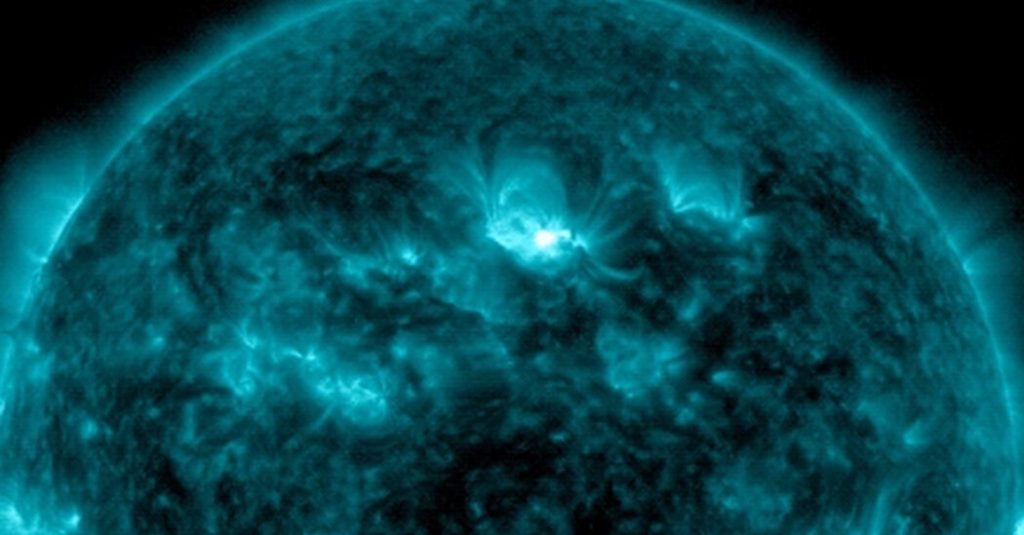The National Oceanic and Atmospheric Administration has issued a severe geomagnetic storm warning due to dramatic blasts of particles from the surface of the sun. These emissions are routine as nuclear reactions occur on the sun, creating space weather that results in auroras, also known as the northern and southern lights. The aurora from this geomagnetic storm may extend as far south as Northern California or Alabama, affecting satellites and infrastructure on Earth, causing disruptions in navigation systems, radio communications, and the power grid. The latest eruptions observed were heading in the direction of Earth and are anticipated to reach the planet’s atmosphere by Friday afternoon or evening, with effects potentially continuing through the weekend.
The current geomagnetic storm is classified as severe with a G4 rating on the scale used by NOAA to categorize these events. This storm is caused by a cluster of sunspots on the solar surface that is about 16 times the diameter of Earth. The cluster is flaring and ejecting material every six to 12 hours, with more activity expected through the weekend. This increased solar activity is part of the sun’s 11-year cycle, approaching a solar maximum, with the current cluster of sunspots being the largest seen in this cycle. More flares and expulsions are expected, but their impact on Earth is uncertain since the cluster may be oriented in a position less likely to affect the planet.
The main impact of a geomagnetic storm like this G4 event is on critical infrastructure on Earth or orbiting near the planet. It can introduce additional current into systems, potentially damaging pipelines, railroad tracks, and power lines. While the general public does not need to take any specific action during these events, agencies and companies operating critical infrastructure are advised to implement protection measures to mitigate any potential effects. The goal of NOAA’s announcements is to give these entities time to prepare and respond appropriately to the impacts of the geomagnetic storm.
For those interested in viewing the aurora triggered by the current geomagnetic storm, the northern lights may be visible in areas beyond where they are usually seen. Prime viewing locations are outside the bright lights of cities, with possible sightings as far south as Alabama. Weather conditions play a significant role in aurora viewing, with clear skies providing the best opportunity. Those in areas with potential aurora activity are encouraged to take pictures or videos with their cellphones, as the camera sensors may capture wavelengths not visible to the naked eye. Daytime observations of sunspots can also be attempted with proper eye protection, such as eclipse glasses.
As the sun’s activity continues to increase during its current solar cycle, more severe geomagnetic storms may occur. While scientists can predict the possibility of such events, the exact impact on Earth is challenging to determine in advance. The ongoing solar maximum phase may result in more flares and ejections from sunspots, but their orientation may limit their effect on the planet. The unpredictability of solar activity means that scientists will continue to monitor and assess the potential impacts of future geomagnetic storms on Earth’s infrastructure and systems.








